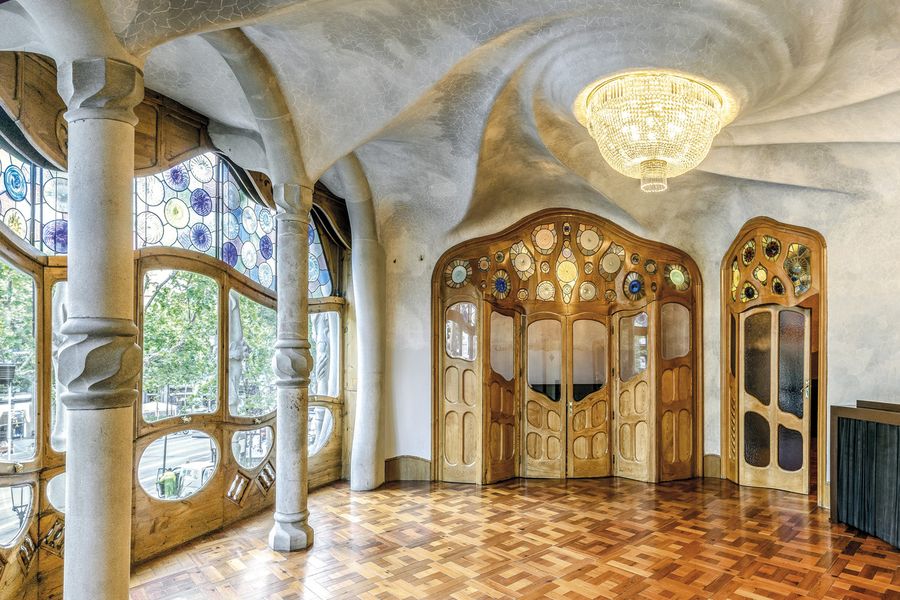14 Aug2023
Barcelona, a city renowned for its vibrant culture and artistic heritage, boasts a unique architectural landscape that captivates visitors from around the world. Among the many remarkable buildings adorning this stunning city, the works of one man stand out as extraordinary expressions of creativity and innovation.
Antoni Gaudí, a visionary Spanish architect, left an indelible mark on Barcelona’s skyline with his awe-inspiring masterpieces. Let us delve into the life and works of this genius, exploring three of his most iconic creations: the Sagrada Familia, Casa Batlló, and La Pedrera.
Antoni Gaudí’s Early Years
Antoni Gaudí i Cornet was born on June 25, 1852, in the small town of Reus, Catalonia. His love for nature and art began at an early age, foreshadowing the profound influence these elements would have on his architectural designs. After graduating from the Barcelona Higher School of Architecture, Gaudí embarked on a journey that would shape the face of Barcelona forever. It is very easy to spot a Gaudí house when you tour the city.
Sagrada Familia
The Sagrada Familia stands as a monumental testament to Gaudí’s lifelong dedication and passion for his work. This grand basilica is perhaps the most recognized and enduring symbol of Barcelona and modernism. Gaudí took over the construction of the Sagrada Familia in 1883, and it became his life’s work until his untimely death in 1926. Even in its incomplete state, the basilica is an awe-inspiring sight, blending Gothic and Art Nouveau styles into a breathtaking expression of faith and beauty.
Gaudí’s vision for the Sagrada Familia was unprecedented, as he sought to harmonize nature and architecture. The towering spires represent the outstretched arms of nature, and the facades narrate stories from the Bible with intricate sculptures and facades. The interior is a symphony of light and color, with stained glass windows casting a kaleidoscope of hues upon the stone surfaces. Today, ongoing construction continues to fulfill Gaudí’s original vision, with an estimated completion date in the coming years.
Casa Batlló
Casa Batlló, a residential building located on the famous Passeig de Gràcia, showcases Gaudí’s ability to transform everyday architecture into surreal, organic forms. Acquired by Gaudí’s patron, Josep Batlló, the building underwent a complete transformation under the architect’s visionary guidance between 1904 and 1906.
The facade of Casa Batlló is a symphony of colors, textures, and whimsical details. The wavy lines and bright mosaic tiles evoke a sense of motion and life, resembling an underwater world or a fantastical dragon. The interior is equally captivating, with a creative use of light, space, and curved lines. The central lightwell, adorned with a stunning blue-toned skylight, floods the building with natural light, creating an ethereal ambiance.
Today it is an award winning museum retaining Gaudí’s genius and blending augmented reality technology to add a new dimension that brings the museum to life, giving fantastic insights into the great man’s thinking and work.
Casa Batlló Planta noble
La Pedrera (Casa Milà)
La Pedrera, also known as Casa Milà, is another of Gaudí’s architectural gems, located on the elegant Passeig de Gràcia. Commissioned by Pere Milà i Camps and his wife Roser Segimon, this residential building was completed in 1912.
La Pedrera is a striking example of Gaudí’s organic architecture, with a sculptural rooftop adorned with surreal chimney stacks resembling medieval knights. The undulating facade, formed by large stone blocks, appears like a living, breathing entity. The interior is an enchanting journey through a maze of curved hallways and rooms, showcasing Gaudí’s attention to detail in every aspect of design.
Gaudí’s Impact on Modern Architecture and Modernism
Antoni Gaudí’s architectural style, often referred to as “Gaudíesque,” defied modernism convention and introduced an entirely new language to the world of design. His focus on organic forms, use of innovative materials, and incorporation of natural elements set him apart as a pioneer of modernism. Gaudí’s work was not limited to just building structures; he believed in creating spaces that harmonized with nature and celebrated the human spirit.
Today, Gaudí’s legacy continues to inspire architects and artists alike. His work remains a source of wonder and admiration, attracting millions of visitors to Barcelona each year. In 1984, several of his masterpieces, including the Sagrada Familia, Casa Batlló, and La Pedrera, were designated as UNESCO World Heritage Sites, recognizing their cultural and historical significance.
Antoni Gaudí’s architectural gems in Barcelona are a testament to his unparalleled genius and his lasting impact on modern architecture. The Sagrada Familia, Casa Batlló, and La Pedrera stand as mesmerizing works of art, inviting visitors to immerse themselves in the surreal and magical world of Gaudí’s imagination. Their distinctive designs and timeless beauty continue to inspire and captivate generations, ensuring that Gaudí’s legacy will live on in the heart of Barcelona and beyond.
Barcelona is a fantastic city in its own right, but with the great man’s.





















Discussion about this post